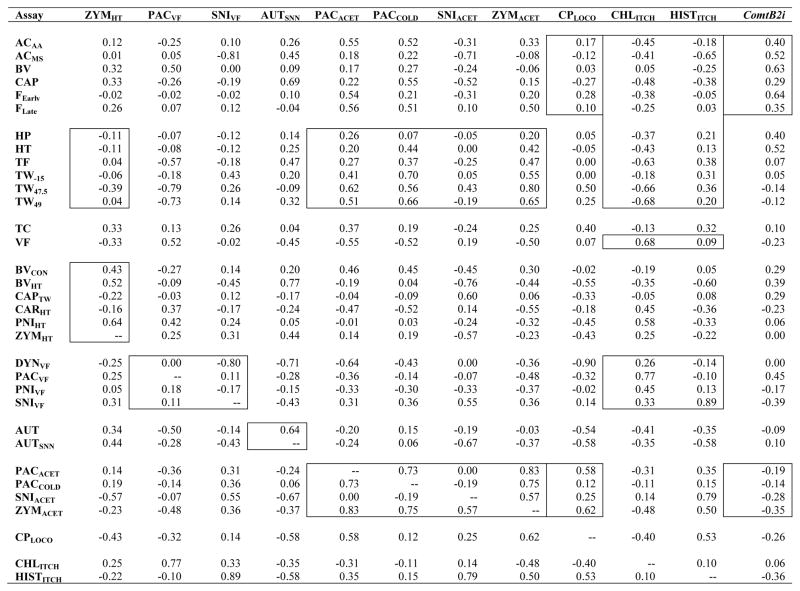Table 2.
Spearman coefficients of rank correlation between the newly added assays (top row) and all assays studied thus far (left column).*

|
Correlations indicated within boxes, from left to right columns: zymosan-induced heat hypersensitivity (ZYMHT) is correlated close to zero with thermal nociception assays in otherwise naïve mice, and variably correlated with other heat hypersensitivity assays (Fig. 3); paclitaxel-induced and spared nerve injury-induced mechanical hypersensitivity (PACVF, SNIVF) are not strongly positively correlated with other assays of mechanical hypersensitivity (Fig. 5); autotomy induced by transection of spinal and saphenous nerves (AUTSNN) is moderately positively correlated with autotomy induced by transection of sciatic and saphenous nerves (Fig. 6); except for SNIACET, cold hypersensitivity assays (PACACET, PACCOLD, ZYMACET) are consistently positively correlated with thermal nociception assays, and highly positively correlated with one another (Fig. 2); cyclophosphamide cystitis-induced hypolocomotion (CPLOCO) is correlated around zero with spontaneous inflammatory nociception assays (Fig. 4A) and moderately positively correlated with two of the four cold hypersensitivity assays (Fig. 4B); both chloroquine-induced and histamine-induced itch (CHLITCH, HISTITCH) are negatively correlated with spontaneous inflammatory nociception assays, but only CHLITCH is negatively correlated with thermal nociception and consistently positively correlated with mechanical sensitivity and hypersensitivity (Fig. 7); Comt genotype associated with the absence of the B2 SINE in the 3′UTR (ComtB2i) is consistently moderately positively correlated only with spontaneous inflammatory nociception assays (Fig. 8A), and mildly negatively correlated with cold hypersensitivity assays (Fig. 8B). Font color reference of assay abbreviations is as in Table 1 legend. Correlations between previously examined assays have been published elsewhere [17,25].
